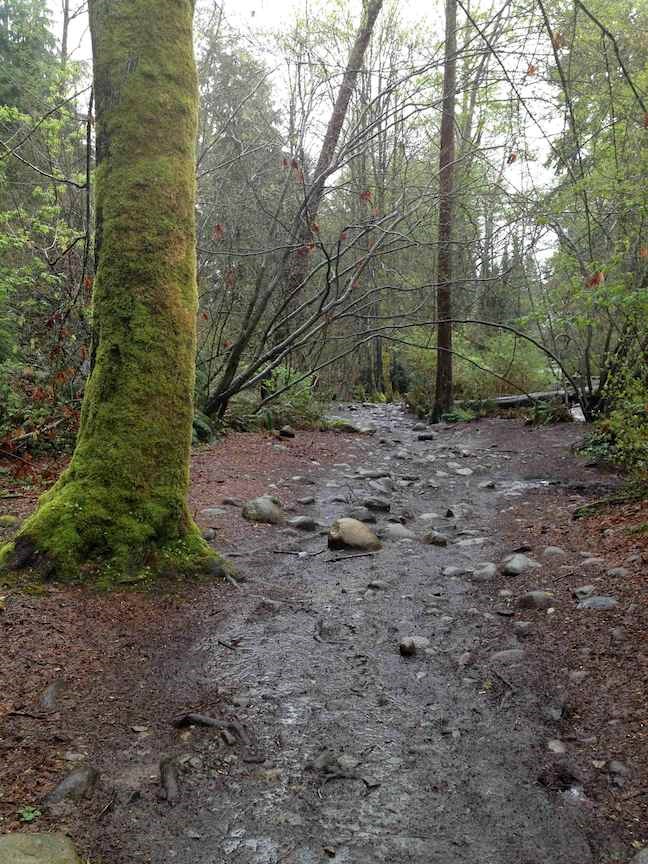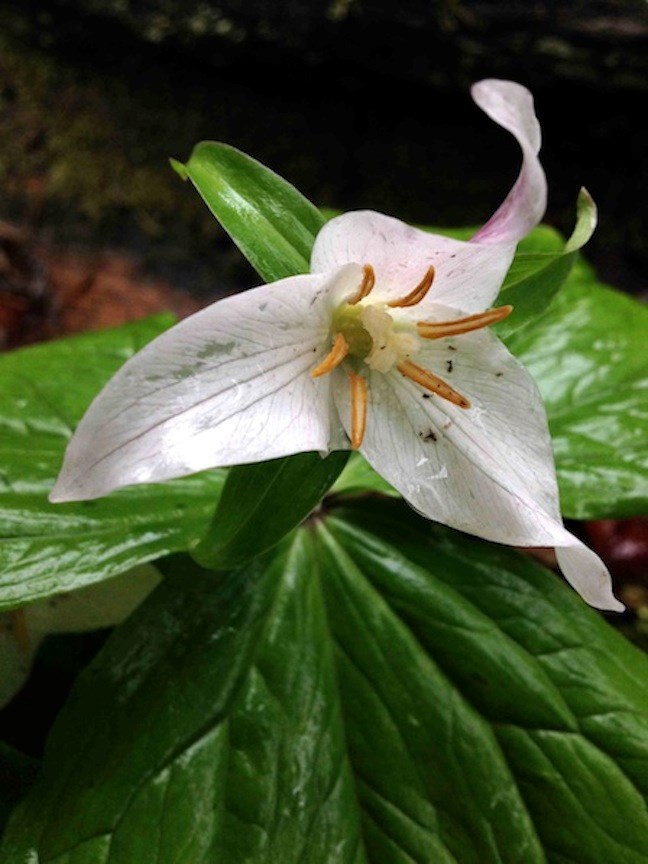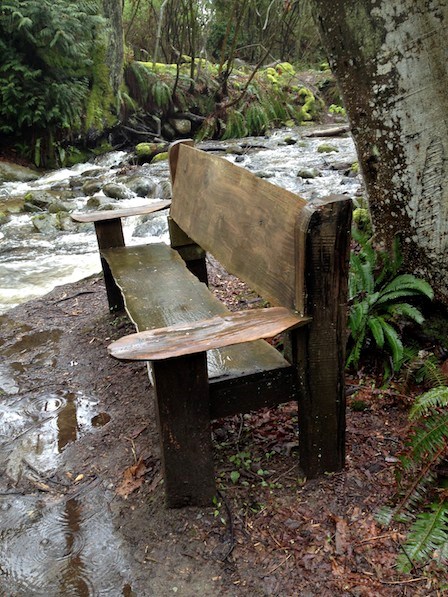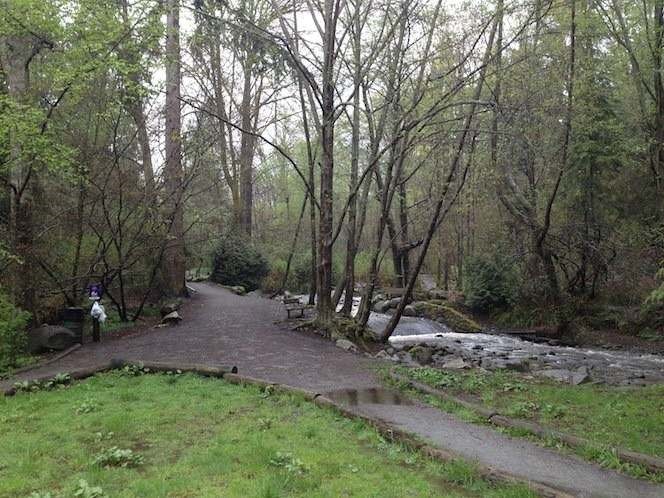| I hope I stand with all Vancouverites when I say "a little rain isn't going to stop me". We who are accustomed to lugubrious Westcoast weather will know that the best way to get outside--without getting too wet--is to head into the trees. Forests in the rain take on a whole new quality: it brings out the surprising orange tint of decomposing cedar; the smell of thousands of layers of ferns and tree needles steeping the damp air; shakes loose reluctant raindrops clinging to unfurling fiddleheads. Hay Park, located just a few blocks up from West Vancouver's busy main artery, is a perfect place to grab your umbrella and take five. |
Hay Park is rife with memories for both me and most other students who at one point attended the nearby West Â鶹´«Ã½Ó³»Secondary. Whether it was sneaking off to make out with your grade 9 boyfriend or to just spend your free period tossing rocks into McDonald creek, it provides a quiet, sheltered spot for a short walk. It is also a designated off-leash area so if your pup is suffering from cabin fever, he is free to roam as he pleases.

According to the archives, the park was named after George Hay, the Reeve of West Â鶹´«Ã½Ó³»from 1915-1917, the days when the area was mostly farmland and weekend getaway properties for the city folk. Now one of the few pockets of actual forest below the highway, it is used by people of all ages and it is common to see joggers and young families passing through. Bigleaf maples and western red cedars create a nice shelter from rain and sun and the main paths are well-kept.

As with any forest, keep your eye on the ground--not only are there a lot of exposed roots to trip over off the beaten track, you might find something cool. On a 15-minute loop around the park I was able to find four types of fungus, Â a few trilliums and an earthworm as long as a new pencil (it's OK, I said "ugh" too). If you're a budding birdwatcher, spotted towhees spend a lot of their time foraging on the forest floor.

McDonald Creek is the fourth-largest watershed in the district and provides water for many homes and businesses. Unfortunately, it is classified as threatened by the Pacific Streamkeepers Foundation due to large amounts of development on West Van's upper slopes. The sign at the entrance proclaiming the park as a salmon and trout habitat is not entirely accurate: prickly sculpin and coho salmon used to use the creek during their biannual mating migration, but it is highly unlikely you will see fish here nowadays; a good-size concrete dam now blocks their progress at the park's Inglewood entrance. Despite this, Hay Park is home to a variety of birds, mammals, and the occasional amphibian.

To get to Hay Park, just walk up 17th Street from Marine Drive and hang a right on Inglewood. The park starts about half a block past the high school's South Campus.


